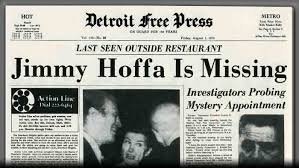Since its appearance in the United States following the Civil War, the urinal has played a role in a variety of important changes in American history, many of which involve social progress.
First patented by Andrew Rankin in the United States immediately following the Civil War, he introduced an upright flushing apparatus in 1866 and they were an immediate hit.
Originally they were the cost effective trench model...just what the name implies, they were long trenches, but the single unit was a hit even though they were not as cost effective as the no flush trench models with a single drain.
For businesses, especially factories, there was more to it than that though. In the long run single urinals were more cost effective because they drastically reduced the amount of space required for a men’s restroom because several urinals could occupy the same square footage of a single, sit-down toilet stall. Also, it was discovered that workers spent less time using a urinal than a sit-down toilet.
During the late 1800s, theories regarding worker productivity abounded, the most common of which was Taylorism which highlighted the need to maximize efficiency by standardizing methods and practices while minimizing interruptions. Moving restrooms closer to the factory floor and creating space for the easy to use urinal made them a hit with cost conscious factory managers.
The growth of cities also meant an increased need for public restrooms. During the early part of the twentieth century, European city planners sought to capitalize on the popularity of the urinal and designed outdoor public urinals known as pissoirs. Also called vespasiennes, these public booths were quite popular in France and other large European cities. Pissoirs were only available for use by men. Following World War II, urinals for women were experimented with but were found awkward to use.
Urinal design has only increased in the last thirty years. The increased tendency of children to accompany their parents necessitated the manufacture of smaller urinals for children and even larger than normal urinals were created for tall people. Sometimes in airports one sees urinals set at three different levels, and it’s not uncommon for may public places to have them at two different levels.
The no-touch urinal, which utilizes an infrared motion proximity sensor to activate the flushing mechanism are the cutting edge of urinal technology. There’s also a health benefit by minimizing contact with germs.
You'll find waterless urinals in crowded public restrooms. Building owners saw that by using dry urinals, they'd save money on water and sewer charges for thousands of flushes. They're installed in the New York Mets Citi Field Stadium and the Shedd Aquarium in Chicago. Waterless urinals are also popping up in states that suffer droughts. Arizona made waterless urinals mandatory in its state buildings in 2005 .
You can also buy a waterless urinal for your home. They’re money savers if you have a house full of males. A family with four males, each flushing the 1.5-gallon toilet three times a day will save 6,552 gallons of water a year by installing and using a waterless urinal. To put that in perspective, somebody figured out that the average American uses 17.2 gallons of water every day just to shower. So, all that water dad and his three sons would use to flush the toilet after peeing means enough water would be saved so that dad could shower 381 times for “free.”
How do they work? Waterless urinals look like regular urinals without a pipe for water intake. Men use them normally, but the urinals don't flush. Instead, they drain by gravity. Their outflow pipes connect to a building's conventional plumbing system. In other words, unlike a composting toilet, which leaves you to deal with your waste, these urinals send the urine to a water treatment plant.
Urinal designs differ by the technology in the drain. Basically, they are a plastic basin whose pipe plugs into the wall plumbing. Other companies put a trap (it's a cup) in the drain, which they say stifles urine odors.
You fill the trap/cup with water and a proprietary liquid, usually oil. The liquid simply has to float on the water. The urine sinks, and gases can't rise through the oil. You do have to replace the traps, from every three months to 7,000 flushes, which costs money. In any case you periodically clean the urinal by pouring gallons of water down the drain and replacing the proprietary oil, which is neither cheap nor entirely waterless.


























